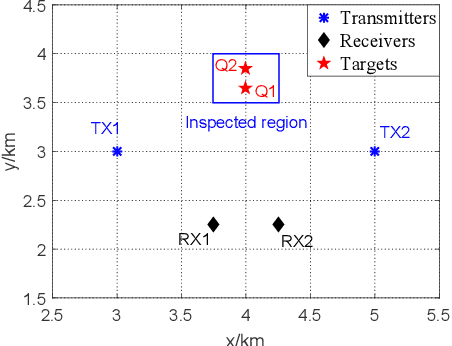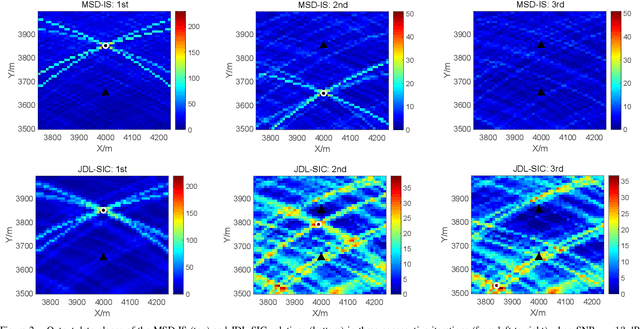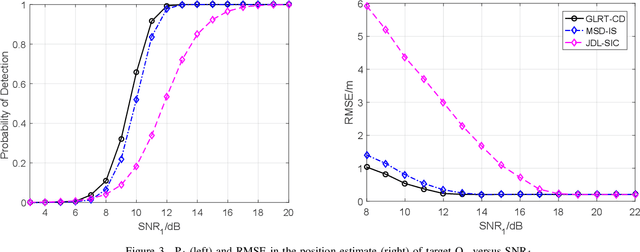Yangming Lai
Subspace-Based Detection in OFDM ISAC Systems under Different Constellations
Jan 30, 2024Abstract:This paper investigates subspace-based target detection in OFDM integrated sensing and communications (ISAC) systems, considering the impact of various constellations. To meet diverse communication demands, different constellation schemes with varying modulation orders (e.g., PSK, QAM) can be employed, which in turn leads to variations in peak sidelobe levels (PSLs) within the radar functionality. These PSL fluctuations pose a significant challenge in the context of multi-target detection, particularly in scenarios where strong sidelobe masking effects manifest. To tackle this challenge, we have devised a subspace-based approach for a step-by-step target detection process, systematically eliminating interference stemming from detected targets. Simulation results corroborate the effectiveness of the proposed method in achieving consistently high target detection performance under a wide range of constellation options in OFDM ISAC systems.
Subspace-Based Detection and Localization in Distributed MIMO Radars
May 18, 2022


Abstract:In this paper, we consider a distributed multiple-input multiple-output (MIMO) radar which radiates waveforms with non-ideal cross- and auto-correlation functions and derive a novel subspace-based procedure to detect and localize multiple prospective targets. The proposed solution solves a sequence of composite binary hypothesis testing problems by resorting to the generalized information criterion (GIC); in particular, at each step, it aims to detect and localize one additional target, upon removing the interference caused by the previously-detected targets. An illustrative example is provided.
 Add to Chrome
Add to Chrome Add to Firefox
Add to Firefox Add to Edge
Add to Edge